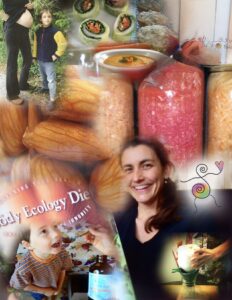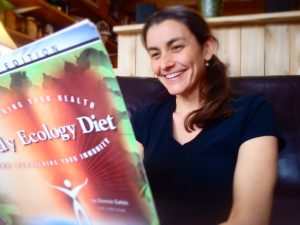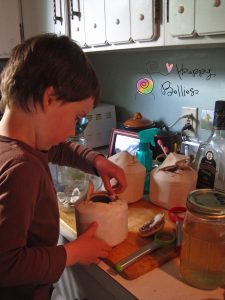My Take on Candidiasis (yeast overgrowth)
Tara Carpenter, NC.
Nutrition Consultant helping people regain natural gut microbiome after yeast, bacteria, and viral infections.
 Originally published on May 13, 2018.
Originally published on May 13, 2018.
Candidiasis, a.k.a. Candida or yeast overgrowth, is not a germ, bug, or disease. This serious immune disorder is named after the most common family of yeast called Candida albicans living in the human digestive tract.
A healthy bowel contains a 10:1 bacteria to yeast ratio, with good yeast outnumbering the bad bacteria to maintain ecological balance. Certain factors throw this balance off, including excess stress, sugar, birth control pill, vaccinations, and antibiotics which allow otherwise harmless organisms to become more active, grow in #’s, and cause a range of health symptoms.
Candida quiz to see if yeast overgrowth is an issue.
Common Signs your gut may be overpopulated with yeast
- Bloating
- Constipation/Diarrhea
- Prostatitis
- Low libido
- Fatigue
- Vaginal itching, burning, discharge (vaginal yeast infection)
- Cradle Cap, Thrush, Colic, Diaper Rash (infants)
- Dandruff
- Endometriosis or infertility
- Brain fog
- Ringworm
- Canker sores
- Headaches
- Thyroid issues
- Leaky gut syndrome
- Allergies
- Skin issues
- Recurring ear or respiratory infections
These are signs that your gut may be overpopulated with yeast.
Yeast overgrowth is not always localized in the gut, rather these organisms tend to travel and be systemic. This means that the once localized overgrowth of Candida albicans can grow roots and burrow into the gut lining where they can pass through into the bloodstream. Once in blood these organisms can travel through the body and influence susceptible organs like the brain, heart, lungs, and bladder.

Change your diet to overcome a yeast-connected problem.
I specifically like Body Ecology Diet (B.E.D.) to heal any degree of a yeast infection. I have personally used B.E.D. to heal myself of a stubborn systemic yeast infection that caused me near every discomfort under the sun for going on 5 years. I am now a trained Holistic Nutrition Consultant to help others regain natural gut microbiome without the use of antibiotics.
Diet change is the single most effective way to rebuild strength/immunity from yeast overgrowth. Unless you rid of the food that Candida albicans love and grow on (sugar, yeast to name a few) then they win because they can take over your gut and build colonies the size of NYC in a matter of minutes. Even burrow roots into gut lining (a.k.a. leaky gut) and go systemic in blood affecting other organs and triggering immune system.
If Candida albicans get through the gut lining and into the blood, they can wrap around internal organs; the most common ones they gravitate to are liver, heart, and lungs. If that happens it’s far more difficult to reverse a condition called systemic yeast overgrowth. Not impossible. I know this because I healed myself from this condition and conquered the beast.

My story
I was diagnosed with systemic Candida in 2010 and sick with most of the above listed symptoms. I felt awful all the time and nearly gave up when a friend handed me a book called Body Ecology Diet (B.E.D.). That was my key to the life I have now. One where I no longer wear only pajama pants because anything else hurt my abdomen so bloated I was. In a few short weeks on B.E.D. I started to feel normal and have less discomfort.
Keep yourself in check
When Candida albicans overtake the good flora (probiotics) living in the gut than they can off gas harmful toxins that drain a human’s (their host) energy and leaves immune system susceptible to illness. True healing originates in your body being able to maintain itself the way that it is designed to do as a self-healing organism. Start with educating yourself on the inner ecosystem and what protocol you want to use to move forward.
May all bellies be happy!
This blog post contains affiliate links, you can read here to learn more.

Young Green Coconut Kefir
Skinny on Food Combining
Nutritional Support with Tara
Disclaimer: This content is for general information only; primarily educational in nature; and shouldn't be treated as a substitute for medical advice of your doctor that you, the reader, may require for any cause whatsoever, now or in future. Consult a medical doctor regarding any health problem(s) and keep him/her fully informed to the opinions, ideas, and dietary advice offered on this site that you find useful.

